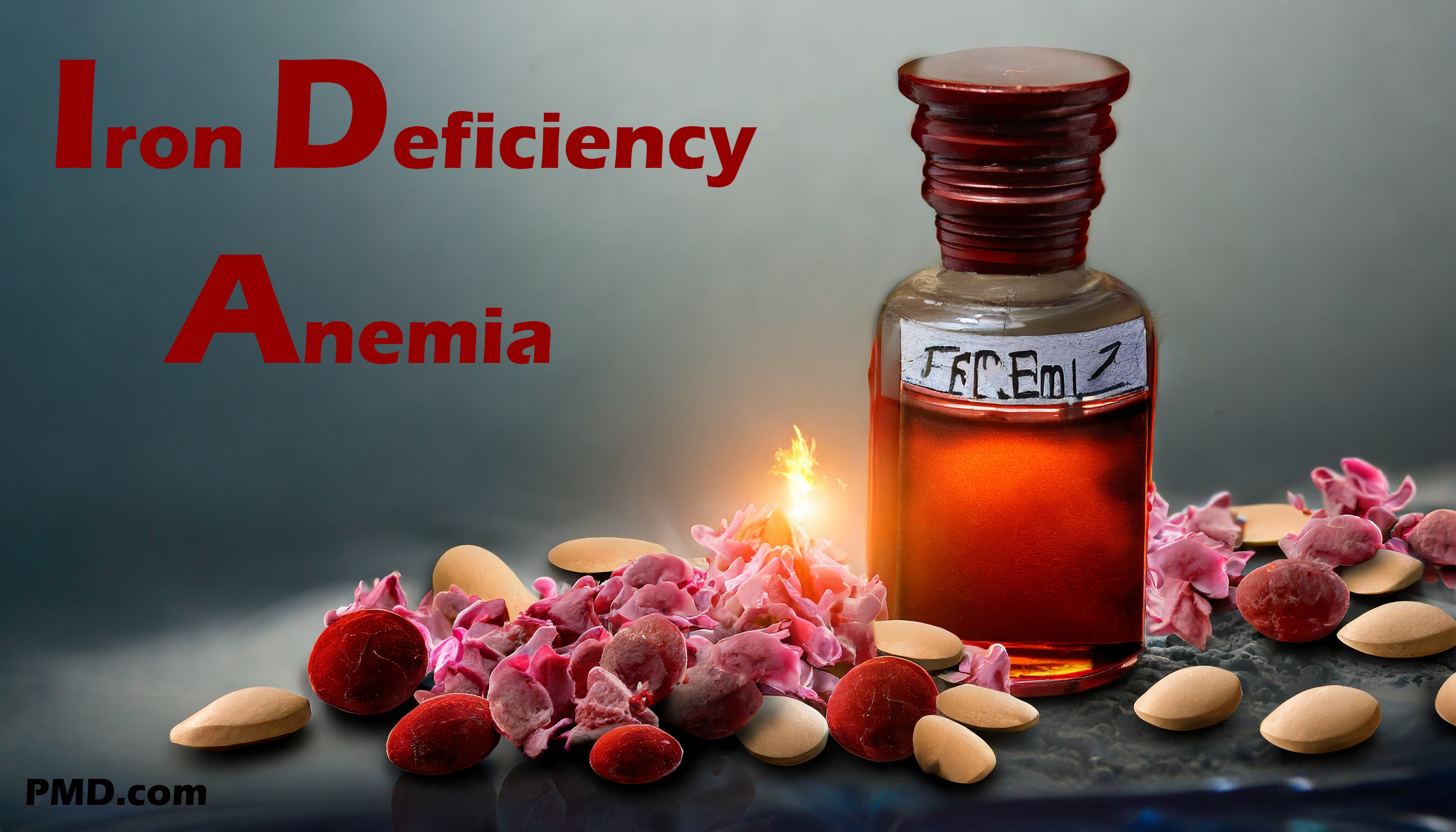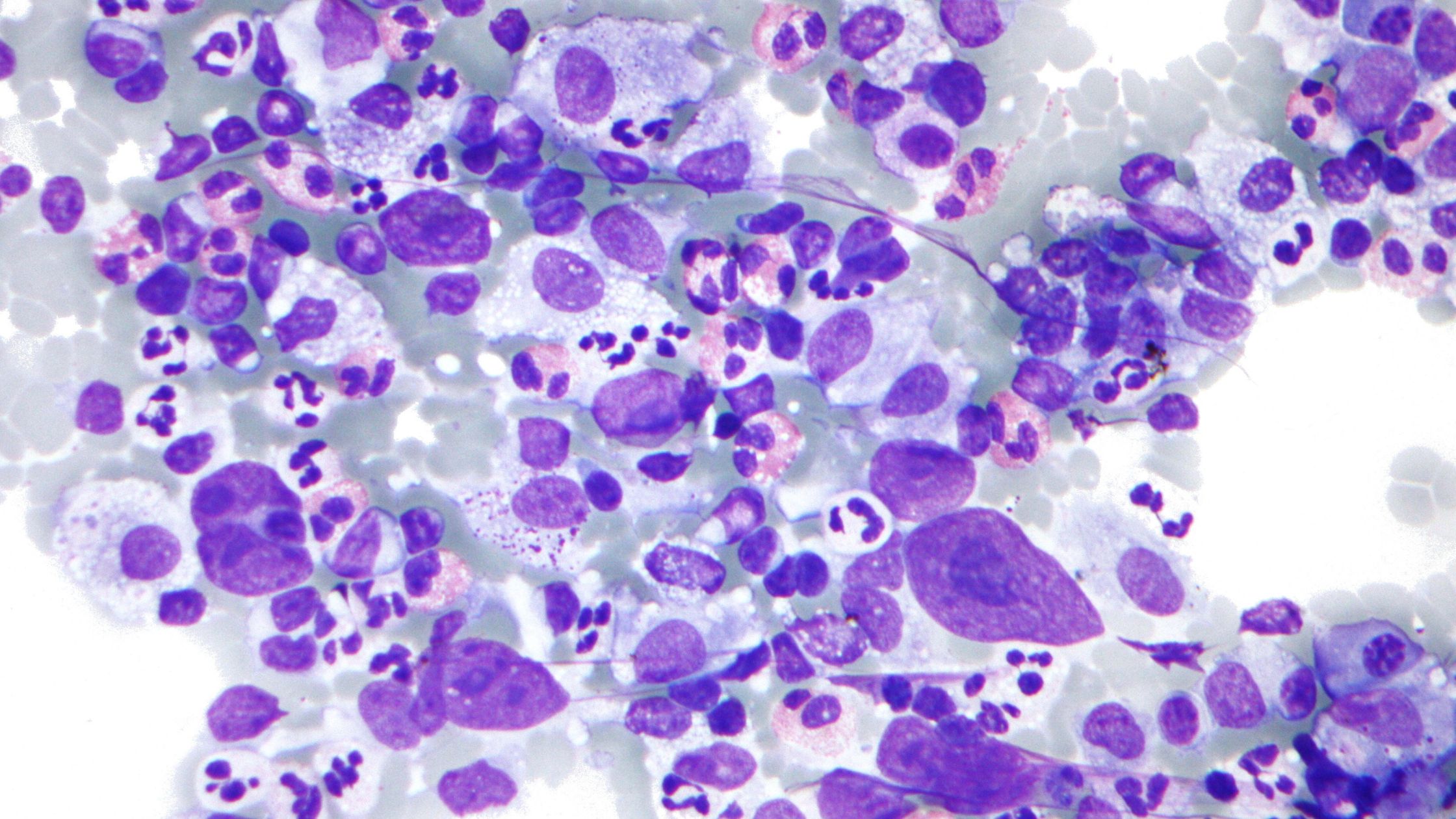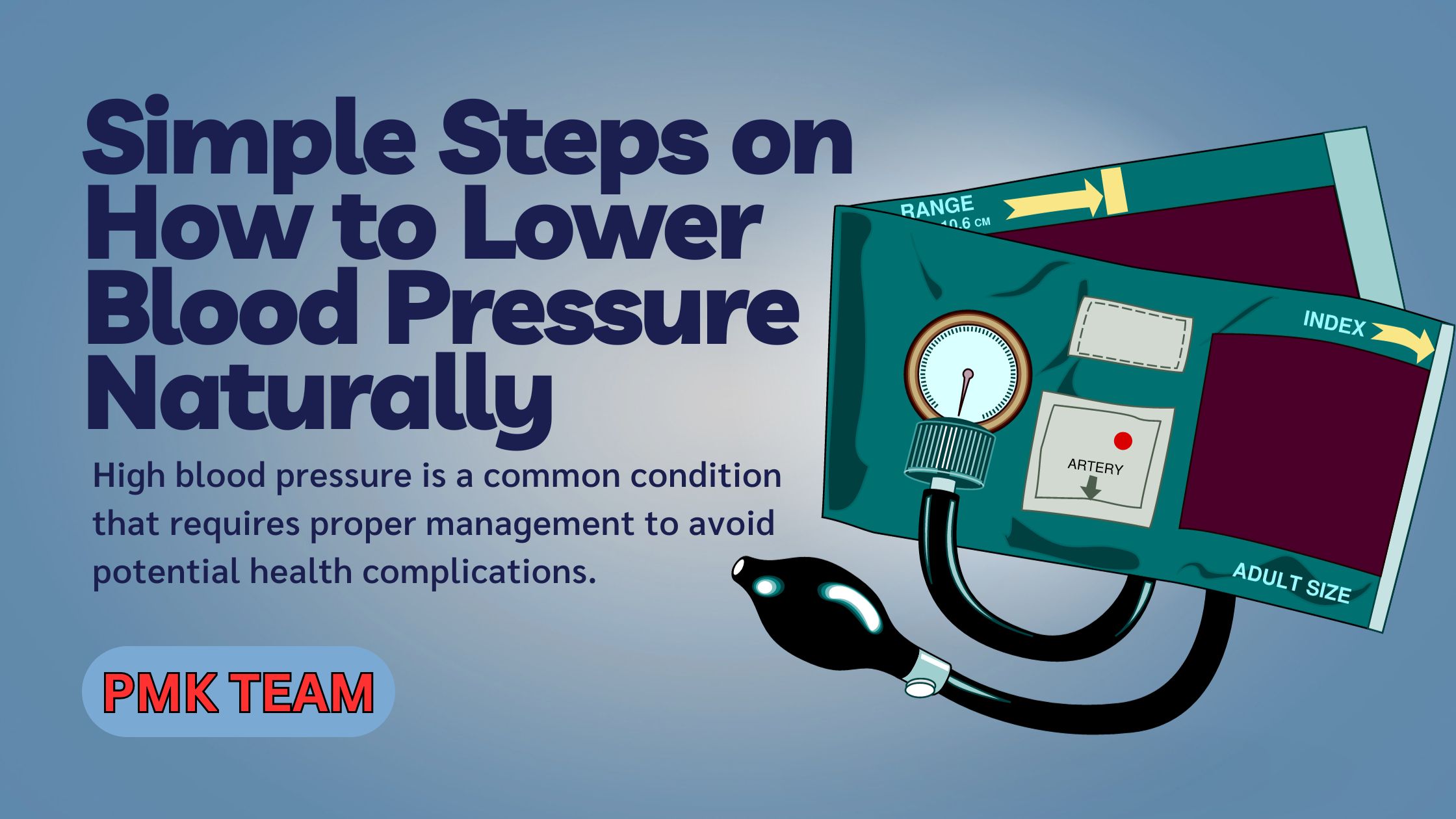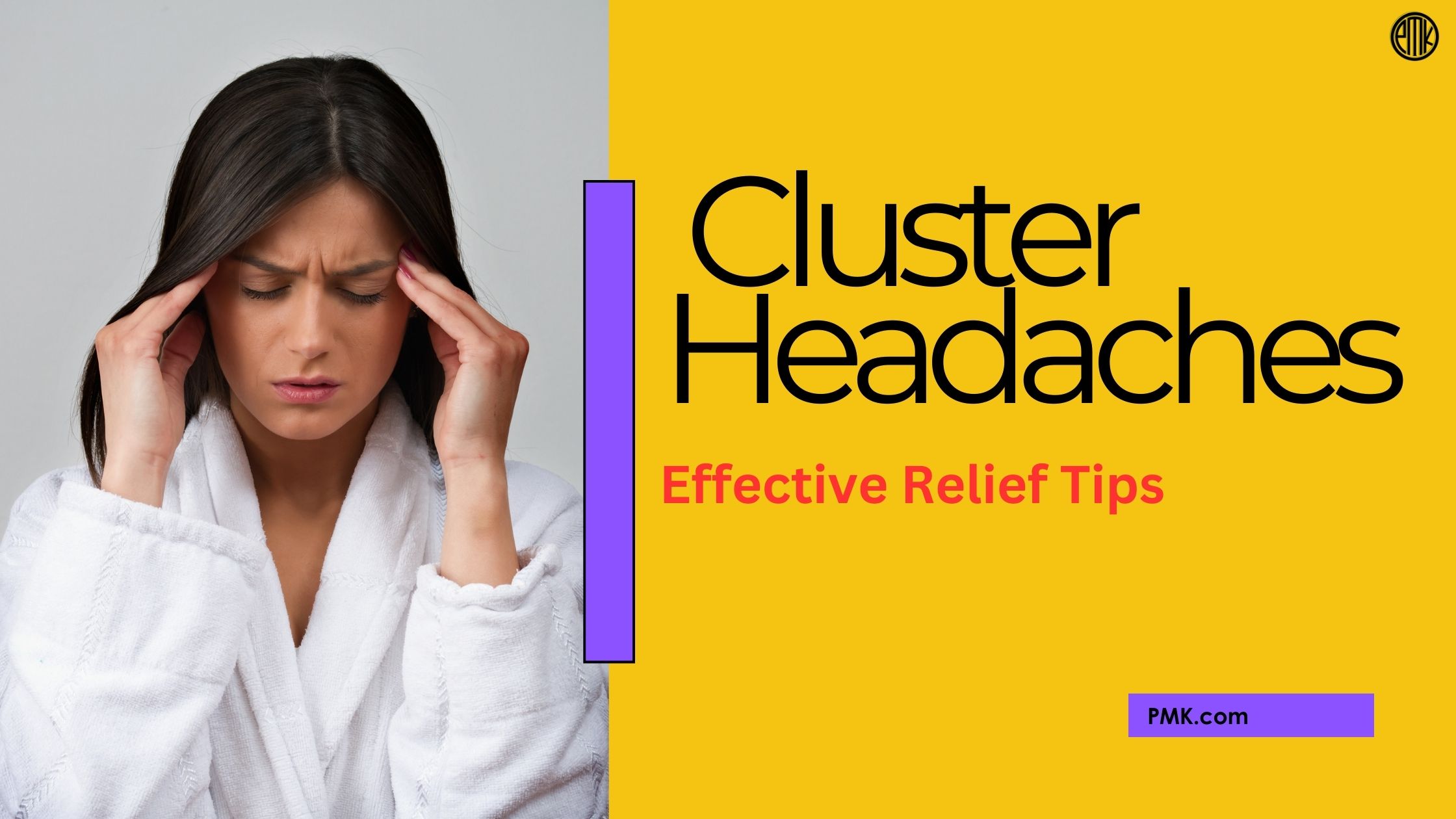Iron deficiency anemia is a common nutritional deficiency worldwide, affecting both genders and all ages. This condition arises from a lack of sufficient iron in the body, leading to a reduced production of hemoglobin, which impairs the ability of red blood cells to transport oxygen to the tissues. Iron deficiency can be caused by several factors, including dietary factors, underlying medical conditions, and certain lifestyle factors that can contribute to low iron levels.

In this article, we will explore the causes, signs and symptoms, pathology, and physiology of iron deficiency anemia. We will also highlight the available treatment options, including iron supplements and iron-rich diet, and emphasize the importance of regular monitoring of iron levels in managing anemia.
Key Features:
- Iron deficiency anemia is a common nutritional deficiency worldwide.
- The lack of sufficient iron in the body impairs the ability of red blood cells to transport oxygen to the tissues.
- Dietary factors, underlying medical conditions, and certain lifestyle factors can contribute to low iron levels.
- Treatment options for iron deficiency anemia include iron supplements and iron-rich diet.
- Regular monitoring of iron levels is crucial in managing anemia.
Iron Deficiency Anemia.
Iron deficiency anemia is a condition characterized by low iron levels in the body, leading to a decreased number of red blood cells and a lower quantity of hemoglobin. Iron is essential for the production of red blood cells, which carry oxygen throughout the body to nourish and energize cells, tissues, and organs.
Low iron levels in the body can lead to a range of symptoms, including fatigue, weakness, shortness of breath, and dizziness. In some cases, iron deficiency anemia can also cause headaches, pale skin, and chest pain.
To better understand low iron symptoms, it’s helpful to know what constitutes normal iron levels in the body. For men, normal iron levels range from 13.5 to 17.5 grams per deciliter (g/dL) of blood, while for women, normal levels are between 12.0 and 15.5 g/dL of blood.
If iron levels drop below these ranges, individuals may experience symptoms of iron deficiency anemia.
Causes of Iron Deficiency Anemia
Iron deficiency anemia is a condition where the body lacks sufficient iron to produce hemoglobin, resulting in fewer red blood cells. There are several causes of iron deficiency anemia, including:
- Dietary factors: A diet low in iron-rich foods can lead to a decrease in iron levels in the body. This is especially common in vegetarians and vegans who may not consume enough iron-rich foods.
- Underlying medical conditions: Certain medical conditions such as celiac disease, Crohn’s disease, and ulcers can cause bleeding in the digestive tract, resulting in a loss of iron. Menorrhagia, a condition where women experience heavy menstrual bleeding, is another common cause of iron deficiency anemia.
- Medications: Certain medications such as aspirin and non-steroidal anti-inflammatory drugs (NSAIDs) can cause gastric bleeding and lead to a decrease in iron levels.
- Lifestyle factors: Excessive alcohol consumption and smoking can also contribute to low iron levels in the body.
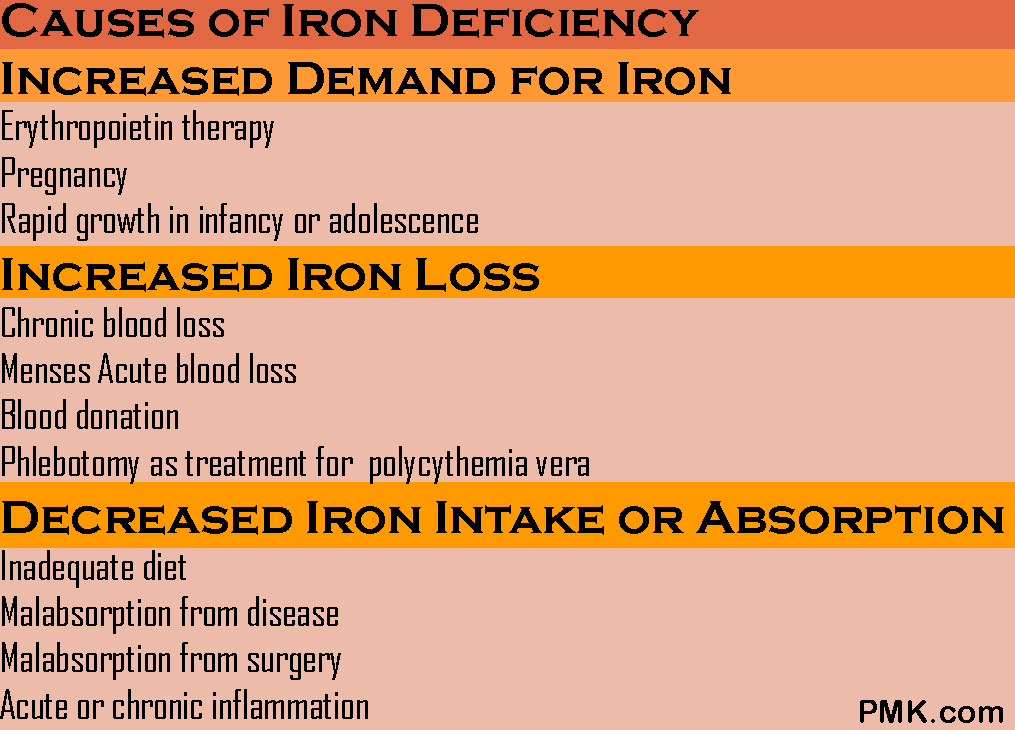
Early detection and treatment of the underlying cause are crucial in managing iron deficiency anemia. Healthcare providers may recommend a combination of dietary changes, iron supplements, and medication to manage the condition and improve iron levels in the body.
Signs and Symptoms of Iron Deficiency Anemia
Iron deficiency anemia is a condition that affects both men and women, but women are more commonly affected due to blood loss during menstruation. The common symptoms of anemia include:
- Fatigue and weakness
- Dizziness
- Shortness of breath
- Chest pain
- Headaches
- Pale skin and nails
- Heart palpitations
- Irregular heartbeat
Women may experience additional symptoms due to their menstrual cycle, such as heavy bleeding, which can cause fatigue and weakness. Anemia can also lead to low ferritin levels, which can cause hair loss and brittle nails.
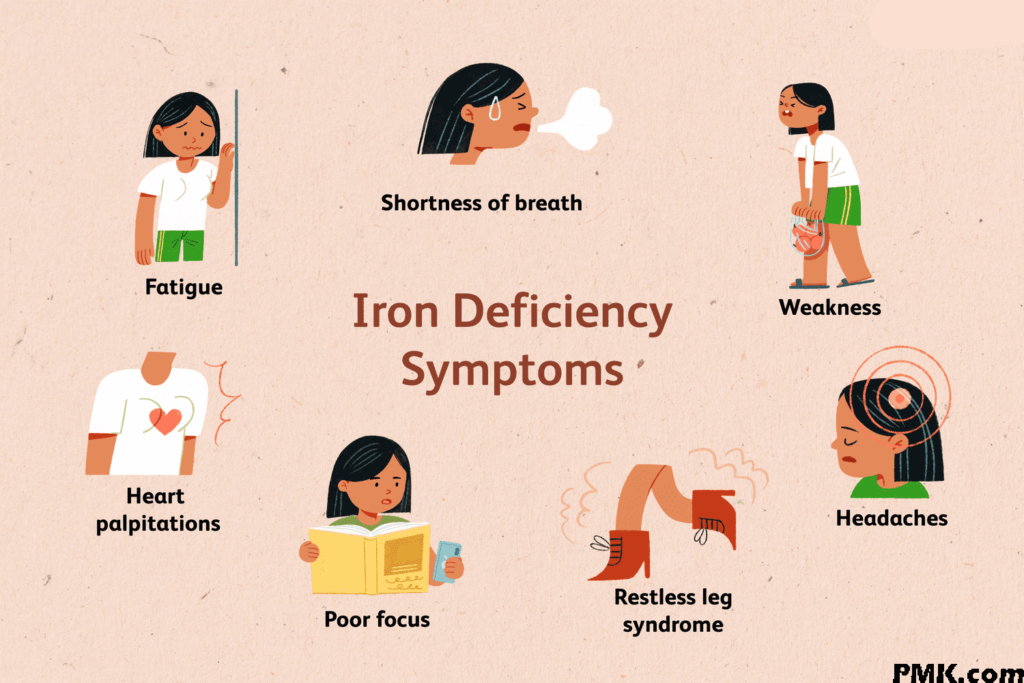
It is important to note that not all individuals with iron deficiency anemia display symptoms. In fact, mild anemia may not produce any noticeable symptoms and may only be detected through blood tests.
Tip: If you experience any of these symptoms, especially if they persist, it is important to consult with a healthcare professional and get a blood test to check for anemia. Early detection and treatment can help prevent complications and improve your quality of life.
Pathology of Iron Deficiency Anemia
Iron deficiency anemia is a condition in which the body lacks sufficient iron to produce hemoglobin, the protein responsible for carrying oxygen in red blood cells. As a result, red blood cells become smaller and paler than normal, and their ability to carry oxygen is significantly reduced. This abnormality in red blood cell morphology is known as microcytic anemia.
The primary cause of microcytic anemia is a deficiency in iron, which is essential for the formation of hemoglobin. Without sufficient iron, the body cannot produce enough hemoglobin to meet its oxygen-carrying needs. This leads to a decrease in the size of red blood cells, as well as a decrease in the amount of hemoglobin per cell.
The process of iron deficiency anemia begins when iron stores in the body become depleted. These stores are typically found in the liver, spleen, and bone marrow. When iron intake is inadequate, or when there is an increased need for iron due to growth or pregnancy, these iron stores become depleted over time.
As iron stores become depleted, the body is forced to rely on the limited supply of iron circulating in the bloodstream. Eventually, this supply is also exhausted, and the body’s ability to produce hemoglobin is compromised. This results in the development of microcytic anemia.
Changes in Red Blood Cells
In addition to their reduced size and paleness, red blood cells in individuals with iron deficiency anemia also exhibit other changes. These changes include:
| Change in Red Blood Cells | Description |
|---|---|
| Reduced hemoglobin content | Due to the decreased availability of iron, each red blood cell carries less hemoglobin than normal. |
| Increased central pallor | The central area of the cell, which normally appears pinkish-red, becomes paler due to the decreased hemoglobin content. |
| Increased variation in size and shape | As the body attempts to compensate for the low iron levels, it produces red blood cells of varying sizes and shapes, including some that are abnormally large and others that are very small. |
These changes in red blood cell morphology can be observed through a complete blood count (CBC) test, which is often used to diagnose iron deficiency anemia.
Physiology of Iron Deficiency Anemia
Iron deficiency anemia affects the body by disrupting the production of hemoglobin, which results in an inadequate supply of oxygen to the tissues. The body responds to iron deficiency by increasing the absorption of iron from the diet and reducing the amount of iron excreted. These physiological mechanisms are part of the body’s natural way of maintaining iron balance.

The lack of iron affects the body’s ability to produce sufficient red blood cells, leading to a drop in hemoglobin levels. One way to diagnose iron deficiency anemia is through a blood test that measures the levels of hemoglobin and hematocrit in the blood. If these levels are low, the individual may be anemic and require further testing to determine the underlying cause.
Anemia Test
The most common test for diagnosing anemia is a complete blood count (CBC) test that measures the levels of red blood cells, hemoglobin, and hematocrit in the blood. Other tests may also be ordered to determine the cause of anemia, including a serum ferritin test, which measures the body’s iron stores, and a reticulocyte count, which evaluates the bone marrow’s ability to produce red blood cells.
Iron deficiency anemia manifests differently in different individuals, and some may experience mild or even no symptoms. Therefore, it is essential to undergo regular screening tests to identify and treat anemia in its early stages. Consulting with a healthcare provider is recommended to determine the appropriate screening tests and frequency of screening.
Normal Iron Levels
The normal range of iron levels in the blood varies depending on age, gender, and other factors. In general, the normal range of serum iron for women is 60-160mcg/dL, while for men, it is 70-180mcg/dL. The normal range of serum ferritin, which is a measure of the body’s stored iron, is 12-150ng/mL for women, and 12-300ng/mL for men. It is essential to understand these levels to monitor iron status and ensure appropriate treatment.
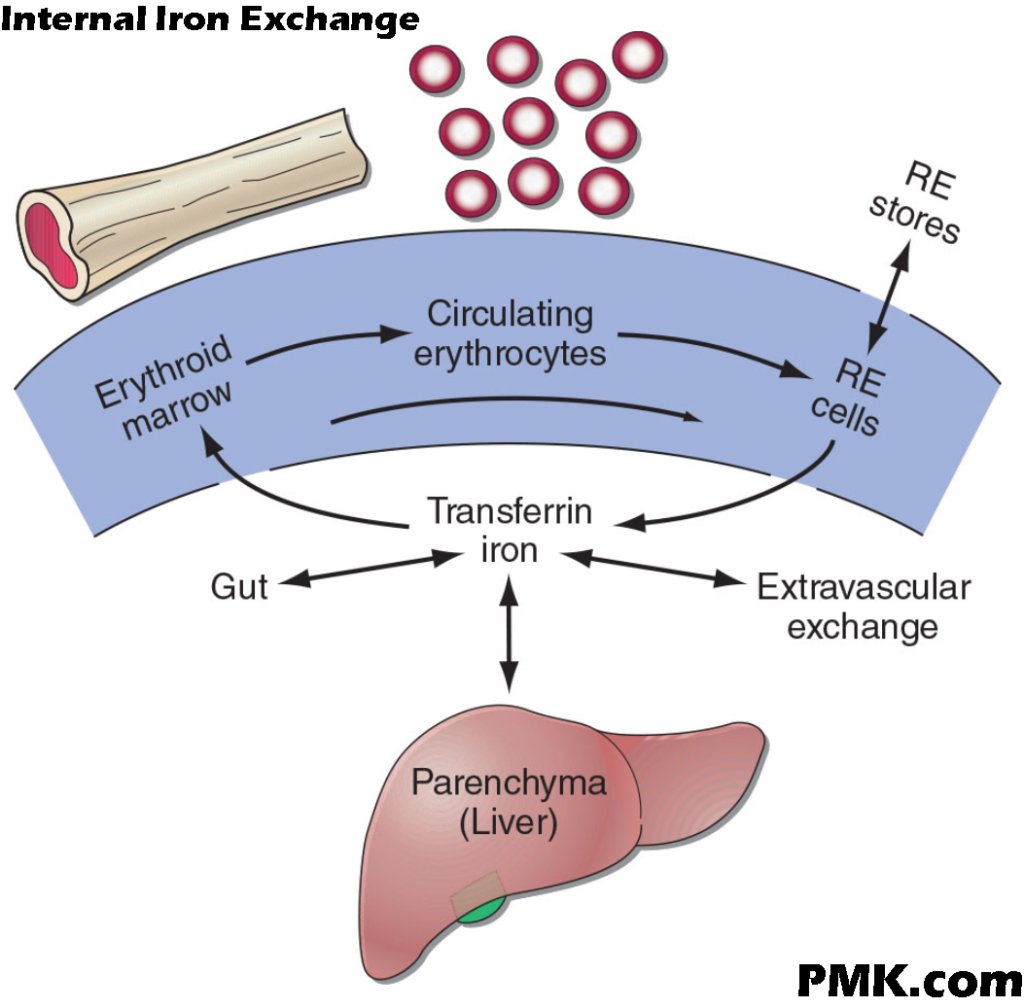
Overall, maintaining normal iron levels is crucial for preventing and treating iron deficiency anemia. Regular screening tests, appropriate treatment, and lifestyle changes, such as incorporating iron-rich foods into the diet, can help manage the condition and improve overall health.
Treatment Options for Iron Deficiency Anemia
Iron deficiency anemia treatment typically involves the use of iron supplements, which can come in various forms, including iron tablets, liquid supplements, and injections.
Iron tablets for anemia are a popular treatment option. They contain ferrous iron, which is easier for the body to absorb than ferric iron, found in many foods. Iron tablets are available over-the-counter and are generally safe and effective when used as directed.
Liquid iron supplements are another option and may be easier to tolerate for those who experience gastrointestinal side effects from iron tablets. Liquid supplements can be added to water or juice and are quickly absorbed by the body.
In severe cases of iron deficiency anemia, iron injections may be necessary. These injections are administered by a healthcare provider and provide a fast and effective way to increase iron levels in the body.
It’s important to note that iron supplements should only be taken under the guidance of a healthcare provider. Excessive iron intake can be harmful, and it’s essential to determine the appropriate dosage based on individual needs.
In addition to iron supplements, making dietary changes can also help improve anemia. Foods that are high in iron include red meat, poultry, fish, beans, and dark leafy greens. Combining iron-rich foods with those that contain vitamin C can enhance iron absorption in the body.
Overall, effective iron deficiency anemia treatment involves a combination of iron supplements, dietary changes, and ongoing monitoring of iron levels. Consult with a healthcare provider to determine the best treatment plan for individual needs.
Best Iron Supplements for Anemia
Iron supplements are an effective way to combat iron deficiency anemia and restore the body’s iron levels. However, not all supplements are created equal. Choosing the best iron supplements for anemia can be a daunting task, especially with so many options available on the market. It is important to select a supplement that is easily absorbed and provides the necessary daily iron intake.
Best Absorbed Iron Supplements for Anemia
One of the most important factors to consider when selecting an iron supplement is absorption. The body must be able to absorb the iron for it to be effective in combating anemia. Here are some of the best absorbed iron supplements for anemia:
| Iron Supplement | Form | Absorption Rate |
|---|---|---|
| Feosol Iron Supplements | Tablets | Up to 25% |
| Spatone Iron Supplement | Liquid | Up to 40% |
| Solgar Gentle Iron | Capsules | Highly Absorbable |
Feosol iron supplements are available in tablet form and contain ferrous sulfate, which has an absorption rate of up to 25%. Spatone iron supplement is a liquid iron supplement that boasts an absorption rate of up to 40%. Solgar Gentle Iron is available in capsule form and is highly absorbable, making it an excellent choice for those with sensitive stomachs.
Iron Supplements for Anemia
Iron supplements come in various forms, including tablets, capsules, liquids, and patches. Here are some of the best iron supplements for anemia:
- Ferrous sulfate
- Ferrous fumarate
- Ferrous gluconate
- Heme iron polypeptide
- Iron bisglycinate
Ferrous sulfate, ferrous fumarate, and ferrous gluconate are the most commonly used forms of iron in supplements and are readily available over-the-counter. Heme iron polypeptide and iron bisglycinate are less common but are highly absorbable forms of iron that can be found in some supplements.
Choosing the Right Iron Supplement
When choosing an iron supplement for anemia, it is important to consider the form, dose, and absorption rate. Always read the label and follow the recommended dosage guidelines carefully. It is also important to consult with a healthcare provider to determine the appropriate type and dosage of iron supplement for your individual needs.
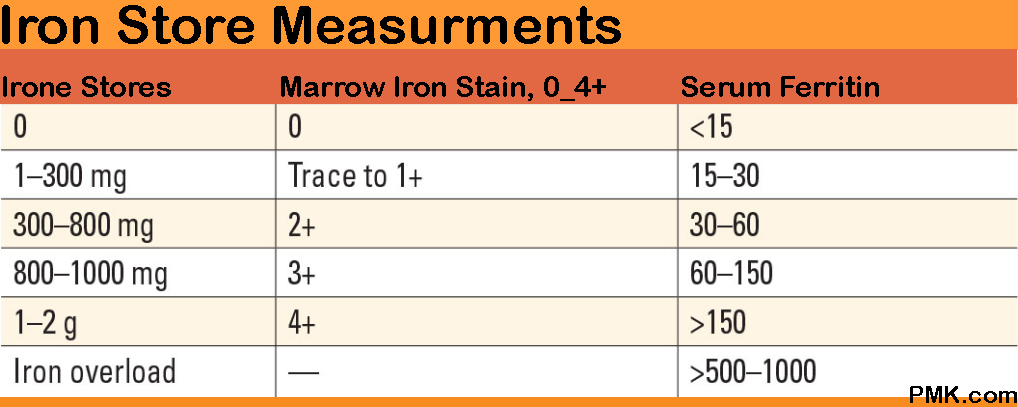
Tip: Taking iron supplements with vitamin C can enhance iron absorption. Foods high in vitamin C, such as citrus fruits and dark leafy greens, can also help optimize iron absorption.
By selecting the best iron supplements for anemia, individuals can effectively manage iron deficiency and improve their overall health and well-being.
Iron-Rich Foods for Anemia
Iron-rich foods are essential for individuals with anemia, as they help boost iron levels in the body and improve overall health. Incorporating these foods into your diet can have a significant impact on managing anemia and reducing symptoms. Here are some excellent sources of iron:
| Food | Iron content (per 100 grams) |
|---|---|
| Spinach | 3.6 mg |
| Lentils | 3.3 mg |
| Beef liver | 5.8 mg |
| Oysters | 7.8 mg |
| Dark chocolate | 3.3 mg |
| Pumpkin seeds | 8.8 mg |
| Sesame seeds | 14.6 mg |
In addition to these foods, there are various other options such as tofu, quinoa, fortified cereals, beans, and nuts that are high in iron. When incorporating these foods into your diet, it is crucial to consider the bioavailability of iron. Some foods, such as spinach and dark chocolate, contain non-heme iron, which is not as easily absorbed by the body as heme iron found in animal products like beef liver and oysters. Pairing non-heme iron sources with Vitamin C-rich foods like oranges or bell peppers can enhance iron absorption. On the other hand, it is essential to avoid foods and drinks that inhibit iron absorption, such as coffee, tea, and calcium supplements.
Adding iron-rich foods into your diet can significantly improve iron levels and manage anemia. However, it is crucial to speak with a healthcare provider to determine the ideal iron intake and whether additional iron supplementation is required.
Iron Supplements for Pregnancy and Anemia
Pregnancy is a critical period during which women need to ensure they have an adequate intake of essential nutrients, including iron. This is because iron plays a crucial role in supporting fetal growth and development, as well as maintaining maternal health. Sadly, iron deficiency anemia is a prevalent problem during pregnancy, affecting up to 50% of pregnant women worldwide. Therefore, pregnant women are often advised to take supplements to maintain healthy iron levels and prevent anemia.
The recommended daily iron intake for pregnant women is 27 mg, which is double the amount required for non-pregnant women. However, iron supplementation needs to be carefully monitored since excessive iron intake can also be harmful. Therefore, it’s essential to consult a healthcare professional before taking any iron supplements during pregnancy.
The Benefits of Iron Supplements for Pregnancy
Taking iron supplements during pregnancy can help prevent and treat iron deficiency anemia, which can cause several adverse outcomes for both the mother and the developing fetus. Iron is needed to produce hemoglobin, the protein found in red blood cells that carries oxygen to the body’s organs and tissues. Without enough iron, the body cannot produce adequate hemoglobin, leading to anemia. Anemia during pregnancy can cause several complications, such as premature birth, low birth weight, and developmental delays in the baby.
Iron supplementation during pregnancy has been shown to reduce the incidence of anemia and improve birth outcomes. It can also improve maternal health, reduce fatigue, and improve overall well-being during pregnancy.
Recommended Iron Supplements for Pregnancy
Iron supplements come in various forms, such as capsules, tablets, and liquid form. However, for pregnant women, it’s best to take iron supplements in a liquid form that is easy to absorb and gentle on the stomach. Liquid iron supplements are less likely to cause constipation, a common side effect associated with iron tablets. It’s also essential to choose iron supplements that have been specifically formulated for pregnant women to ensure the right dosage and avoid any potential side effects.
Iron Patches for Anemia
Iron patches are a relatively new method of delivering iron supplementation to individuals with anemia. They are small patches that are applied to the skin and release iron over time, allowing for slow and steady absorption.
Iron patches offer a convenient alternative to traditional iron supplements in pill form. They may be particularly beneficial for individuals who have difficulty swallowing pills or who experience side effects from oral iron supplements.
Iron patches are also easy to use and can be applied directly to the skin. They can be worn discreetly under clothing and do not require refrigeration or special storage.
| Advantages of Iron Patches | Limitations of Iron Patches |
|---|---|
| Easy to useSlow and steady iron releaseNo gastrointestinal side effectsConvenient for individuals who have difficulty swallowing pills | May cause skin irritation or allergic reactionMay not be as effective as oral supplements for severe anemiaRelatively expensive compared to oral supplements |
Iron patches are generally considered safe to use, but it is important to follow the manufacturer’s instructions and consult with a healthcare provider before using them.
Tip: If you are interested in trying iron patches for anemia, speak with your healthcare provider to determine if they are a suitable option for your individual needs.
Iron Anemia Treatment: Liquid Supplements
Liquid iron supplements can be an effective way to treat anemia, particularly for individuals who have difficulty swallowing pills or struggle with gastrointestinal issues that can interfere with iron absorption. Liquid supplements are also a convenient option for those who need to take iron on-the-go.
There are different types of liquid iron supplements available, including:
| Type of Liquid Iron Supplement | Benefits | Considerations |
|---|---|---|
| Ferrous sulfate | Effective and widely available | Can cause digestive issues such as constipation or diarrhea |
| Ferrous gluconate | Well-tolerated with fewer gastrointestinal side effects | May not be as effective as other types of liquid iron supplements |
When taking liquid iron supplements, it’s important to follow the recommended dosage provided by a healthcare provider. Taking too much iron can be harmful, particularly for individuals with certain medical conditions such as hemochromatosis.
It’s also important to note that liquid iron supplements may not be suitable for everyone, particularly for individuals who have a history of liver disease or other medical conditions that prevent adequate iron absorption. Before starting any new iron supplement, it’s important to speak with a healthcare provider to determine the best treatment plan for your individual needs.
Iron Levels and Anemia Management
Regular monitoring of iron levels is a crucial aspect of managing anemia. Iron levels can be measured through blood tests, which can provide insights into the level of iron in the body.
The ideal iron levels for individuals with anemia may vary depending on factors such as age and sex. In general, normal iron levels fall within a range of 60 to 170 micrograms per deciliter (mcg/dL) for men and 40 to 150 mcg/dL for women.
Managing iron levels in individuals with anemia may involve a combination of lifestyle changes and iron supplements. It is important to work closely with a healthcare provider to develop a personalized treatment plan that takes into account individual needs and underlying health conditions.
| Iron Levels | Normal Range (mcg/dL) |
|---|---|
| Men | 60-170 |
| Women | 40-150 |
Supplementing with iron may be necessary for individuals with low iron levels due to dietary factors or an underlying medical condition. Iron supplements can be taken orally or administered intravenously, depending on the severity of the anemia and the speed with which iron levels need to be replenished.
Individuals with anemia should work closely with their healthcare provider to determine the appropriate dosage and duration of iron supplementation. Consistent monitoring of iron levels can help ensure that treatment is effective and adjusted as needed to achieve optimal iron levels and overall health.
Supplementing Iron for Anemia
Iron supplements are an effective way to treat iron deficiency anemia and improve symptoms such as fatigue, weakness, and shortness of breath. Different types of iron supplements are available, each with its own benefits and considerations. Here are some of the most common types of iron supplements used to treat anemia:
| Iron Supplement Type | Pros | Cons |
|---|---|---|
| Ferrous sulfate | Effective and affordable | Common side effects include constipation, nausea, and upset stomach |
| Iron bisglycinate | Gentle on the digestive system | May be more expensive than other types of iron supplements |
| Polysaccharide iron complex (PIC) | Well-tolerated and less likely to cause side effects | May not be as effective as other types of iron supplements |
When taking iron supplements, it’s essential to follow the recommended dosage and take them as instructed. Taking too much iron can be dangerous and even fatal, particularly for children. It’s also important to note that iron supplements should be taken separately from other supplements or medications, as they can interfere with absorption.
In addition to iron supplements, there are other supplements that can help manage anemia, such as vitamin B12 and folic acid. These supplements can help support healthy red blood cell production and improve symptoms of anemia.
If you think you may have anemia, it’s important to talk to your healthcare provider for an accurate diagnosis and treatment plan. Supplementing iron for anemia can be an effective treatment option, but it’s essential to work with your healthcare provider to ensure you’re taking the right supplements in the correct dosage.
Conclusion
Iron deficiency anemia is a serious condition that can have significant impacts on an individual’s health and wellbeing. Timely diagnosis, treatment, and ongoing monitoring of iron levels are crucial in managing the condition effectively.
There are a number of treatment options available for iron deficiency anemia, including iron supplements, iron-rich foods, and alternative delivery methods such as patches and liquid supplements. The best course of treatment will depend on individual needs and considerations, and should be discussed with a healthcare provider.
The importance of maintaining optimal iron levels cannot be overstated. Regular monitoring of iron levels is essential in managing anemia, and can help ensure that treatment plans are effective in achieving desired outcomes.
If you or someone you know is experiencing symptoms of iron deficiency anemia, it is important to seek timely medical attention. With the right diagnosis and treatment plan, it is possible to effectively manage the condition and improve overall health and wellbeing.
Keywords:
iron deficiency anemia, iron anemia treatment
FAQ
What is iron deficiency anemia?
Iron deficiency anemia is a condition characterized by low levels of iron in the body, leading to a decrease in the production of red blood cells and a subsequent decrease in the amount of oxygen that can be carried throughout the body.
What are the common signs and symptoms of iron deficiency anemia?
Common signs and symptoms of iron deficiency anemia include fatigue, weakness, pale skin, shortness of breath, dizziness, headache, cold hands and feet, brittle nails, and an increased susceptibility to infections.
What causes iron deficiency anemia?
Iron deficiency anemia can be caused by various factors, including inadequate dietary intake of iron, poor absorption of iron by the body, chronic blood loss (such as from menstruation or gastrointestinal bleeding), and certain underlying medical conditions that affect iron metabolism.
How is iron deficiency anemia diagnosed?
Iron deficiency anemia is typically diagnosed through blood tests that measure hemoglobin levels, iron levels, ferritin levels, and other related markers. These tests help determine the severity of the anemia and identify the underlying cause.
What are the treatment options for iron deficiency anemia?
The treatment of iron deficiency anemia usually involves iron supplementation to replenish the iron stores in the body. This can be done through oral iron supplements or, in severe cases, through intravenous iron therapy. In addition, addressing the underlying cause of the anemia may be necessary.
Are there any natural or dietary ways to increase iron levels?
Yes, incorporating iron-rich foods into your diet can help increase iron levels naturally. Foods such as lean red meat, poultry, fish, legumes, dark leafy greens, and fortified cereals are good sources of dietary iron. It is important to note that dietary iron may not be sufficient in cases of severe anemia, and supplementation may be necessary.
Can iron deficiency anemia be prevented?
Iron deficiency anemia can be prevented by maintaining a balanced diet that includes sufficient iron-rich foods. It is also important to address any underlying conditions that may contribute to iron deficiency, such as chronic gastrointestinal bleeding or menstrual disorders.
Can iron deficiency anemia affect pregnancy?
Yes, iron deficiency anemia can have adverse effects on both the mother and the developing fetus during pregnancy. It can increase the risk of preterm birth, low birth weight, and developmental issues in the baby. Iron supplementation is often recommended during pregnancy to prevent or treat anemia.
What are the potential side effects of iron supplementation?
Some common side effects of iron supplementation include constipation, nausea, abdominal discomfort, and darkening of the stool. These side effects can often be managed by adjusting the dosage or switching to a different form of iron supplement.
How long does it take to see improvement in iron levels after starting treatment?
The time it takes to see improvement in iron levels can vary depending on the severity of the anemia and the individual’s response to treatment. In general, it may take several weeks to months of consistent iron supplementation to replenish iron stores and see an improvement in symptoms.

